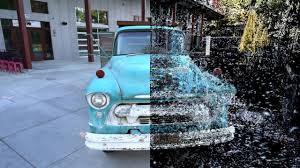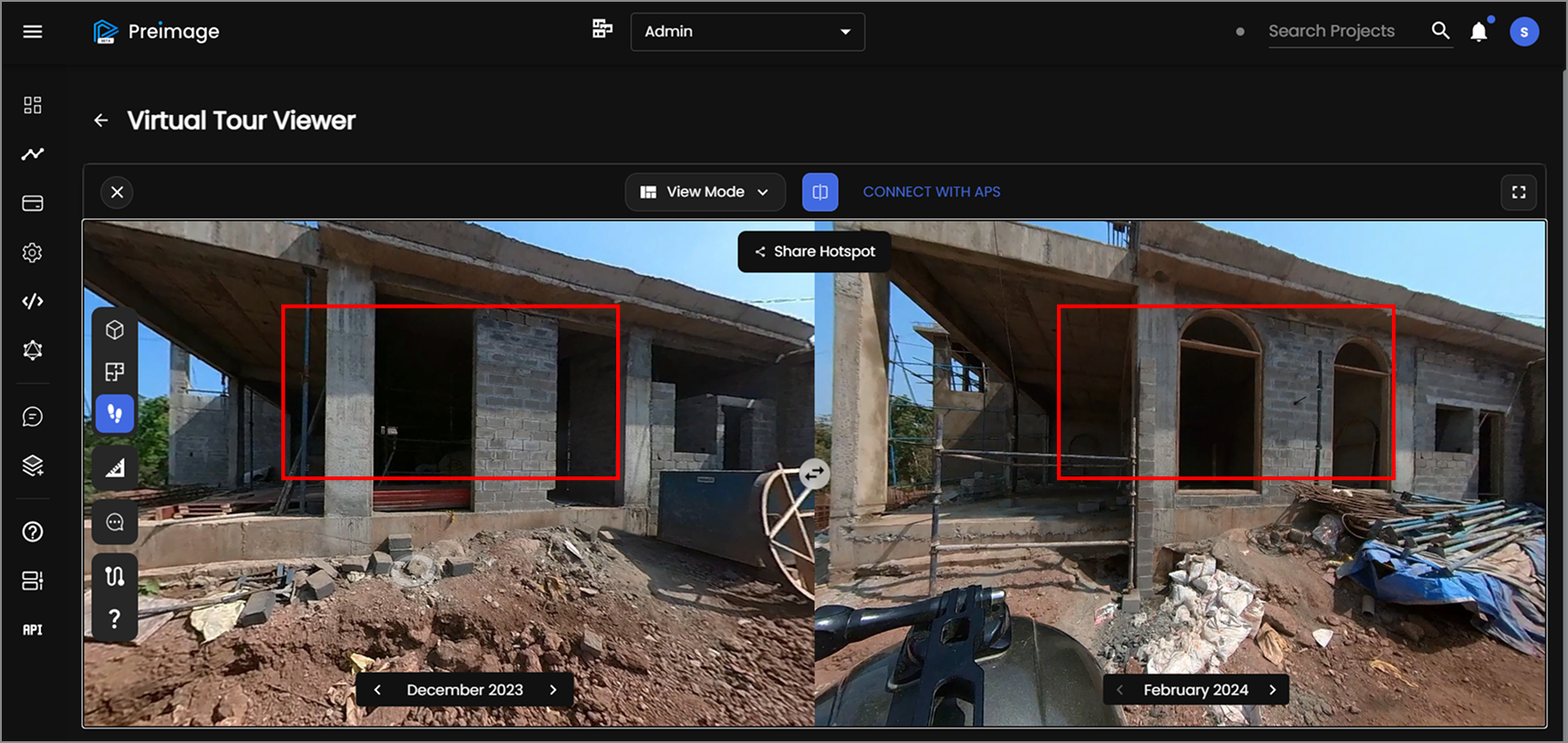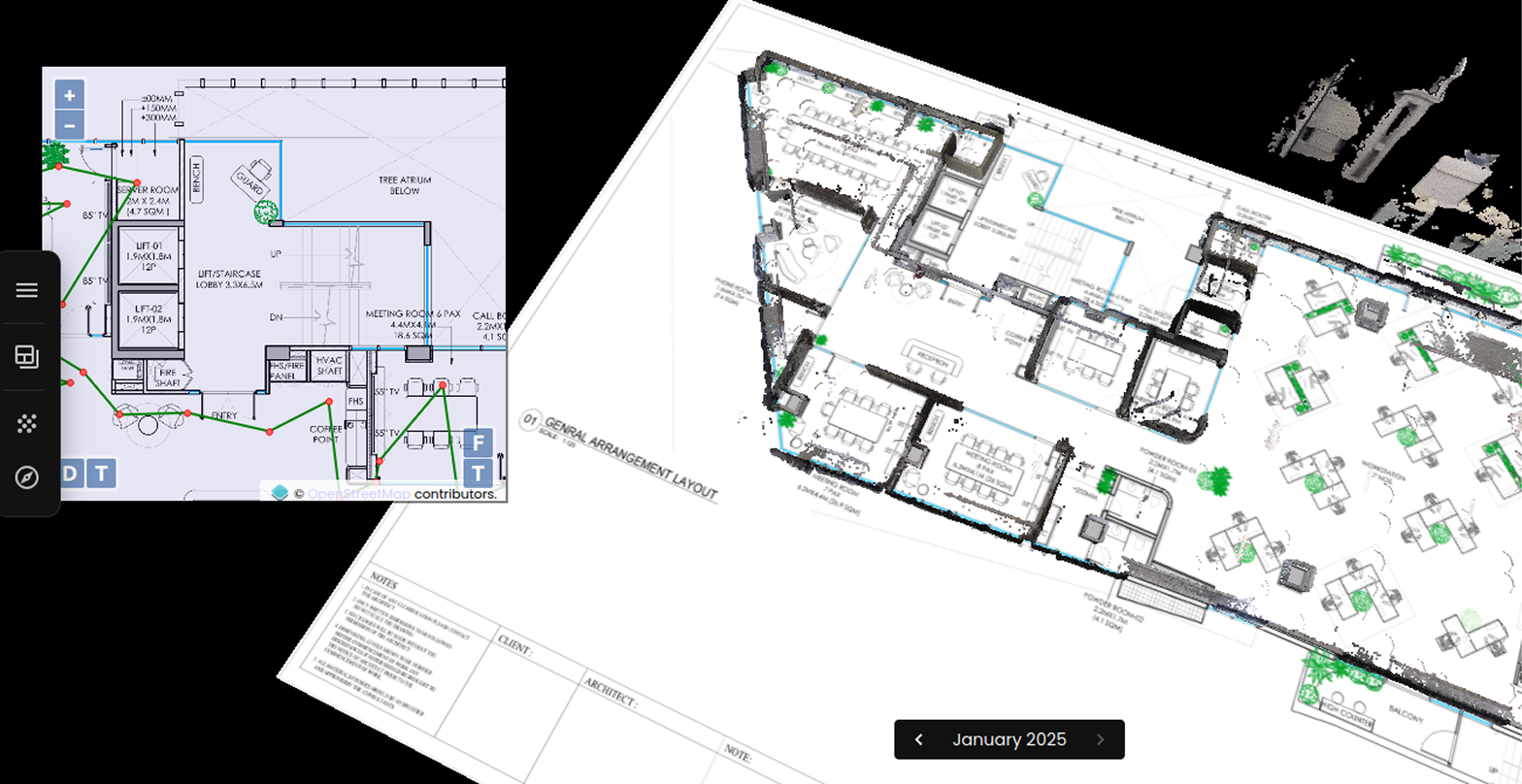Gaussian Splatting is a new way of turning real-world video into 3D that feels fast and natural. Instead of relying on heavy polygon meshes like traditional 3D modeling or photogrammetry, it represents the scene as millions of tiny translucent ellipsoids—“Gaussians.” Each Gaussian carries information about color, size, shape, and orientation. When you put millions of them together, they form a rich, detailed 3D representation that looks photoreal and can be rendered efficiently in real time. The result is a smooth, explorable scene you can orbit around or even set cinematic camera paths through.
Why 360° cameras are perfect for this
Cameras like the Insta360 or GoPro Max capture a all around 360 view in every frame, which means more consistent coverage and fewer reconstruction gaps. They also handle tight spaces and long corridors smoothly without the need for complex multi-camera rigs. The result is a straightforward workflow: a casual capture turns into an explorable 3D model and flythrough with minimal effort.
The workflow in practice
- Capture: Walk through at a steady pace, overlap your paths, and try to close loops where possible.
- Preprocess: Pull out the video frames, estimate camera positions, and remove or mask out moving objects (like people or vehicles) to avoid ghosting.
- Build and polish: Generate the splat model, set up flythrough paths, add callouts or labels, and render a polished video—or simply share an interactive version.
- You might have to break your 360 images into individual perspective images for processing in Postshot or similar software. Preimage's algorithm instead directly works on 360 Video.
Where it shines
- Virtual site visits for design reviews or team coordination.
- Training and onboarding, like safety walkthroughs or familiarization with routes.
- Sales and marketing—immersive property tours without heavy staging.
- Personal moments—capturing events, exhibitions, or pop-ups as living 3D memories
Things to keep in mind
- You’ll need a decent GPU with plenty of VRAM. With 12–24 GB, expect around 30–40 minutes to process a typical walkthrough.
- Gaussian Splatting captures appearance really well but isn’t as precise as photogrammetry for measurements or CAD work. Think of it as a tool for photoreal 3D viewing, not survey-grade data.
- It often does better with thin structures (railings, wires, shelves) than traditional photogrammetry. But reflective, glossy, or fast-moving objects can be tricky.
- Always segment or mask moving objects, otherwise they'll leave behind trails or "melted" shapes. Preimage automatically handles this for you.
Practical capture tips
- Do one broad “context” pass, then a closer “details” pass. In long hallways, walk both directions.
- Keep important surfaces within about 0.5–5 m for better parallax.
- Lock exposure and white balance to avoid flicker, and don’t spin too quickly.
- If an area looks tricky, do a clean re-pass and handle motion during preprocessing.
The bottom line
With a simple 360° walkthrough, Gaussian Splatting makes it easy to create a compelling, photoreal 3D experience. From site reviews to virtual tours—or even just saving personal memories—it’s a fast, accessible way to turn raw footage into something immersive and shareable. All you need is a capable GPU and a bit of planning around motion masking








.webp)